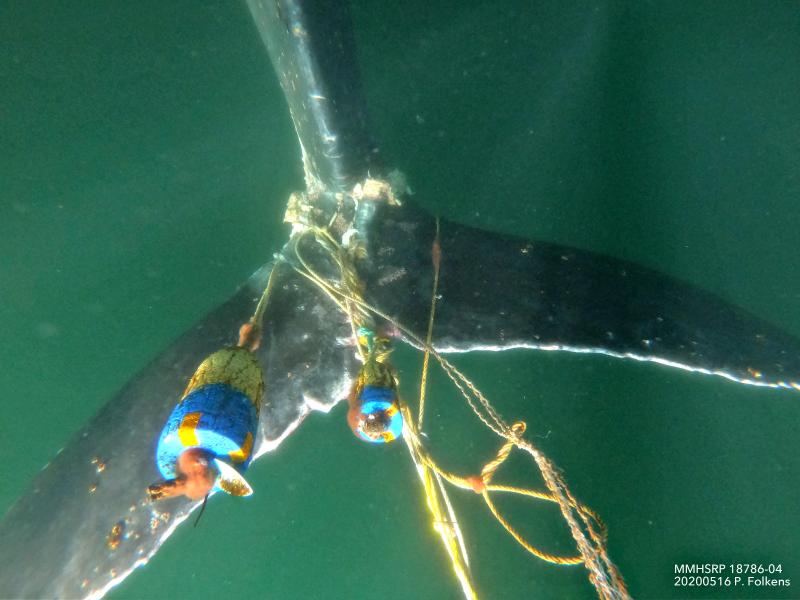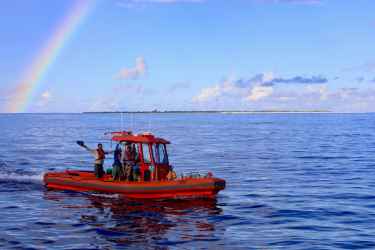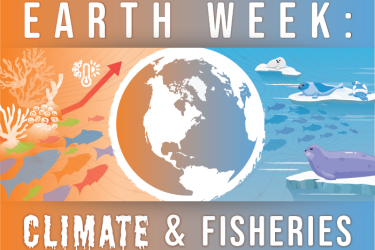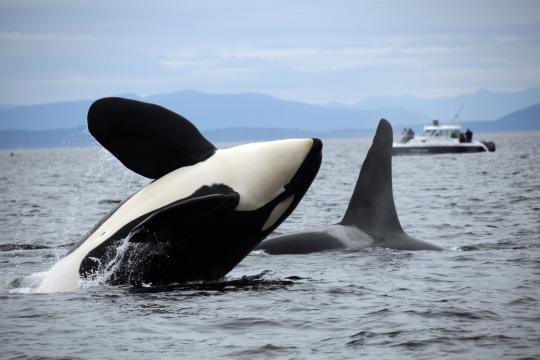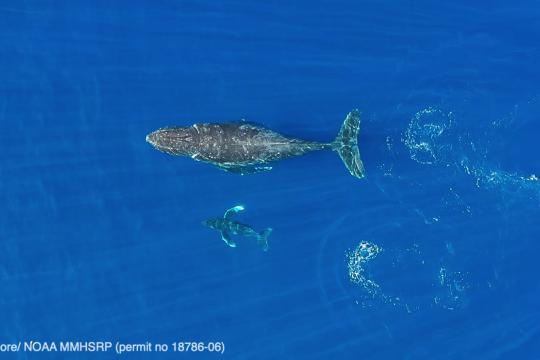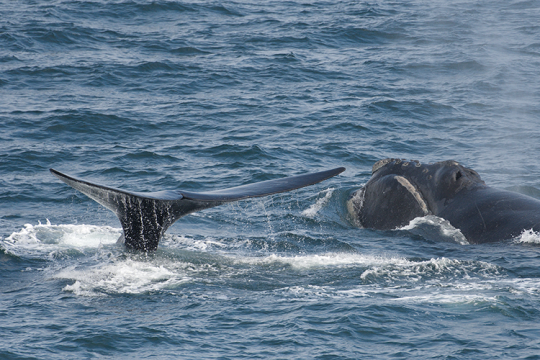The Whale Entanglement Problem
When whales become entangled in fishing gear or marine debris, they are at risk of injuries or death. Some entanglements can persist from weeks to months to even years, and the whales can experience great pain and suffering inflicted by the entangling material. NOAA Fisheries works with the nation’s top large whale experts, including biologists, veterinarians, marine patrol officers, fishermen, and whale watch captains to respond to entangled whales. They have all received specialized training to respond to these dangerous and complex cases. To protect yourself—and the whale—let these experts respond to entangled whales.
While many people empathize with the animals and want to help, untrained members of the public should not attempt to free entangled whales. The best way that you can help is by reporting sightings of entangled whales to the local entanglement response network. Then, stand by until response team members arrive, and provide any photos or videos to NOAA Fisheries. Our goal is to conduct rescue operations with the best possible outcome for the animals while also minimizing risk to the professional responders. There is usually time for qualified experts to assess, respond, and cut the animal free, as whales can carry entanglements for some time.
Protecting Human Safety
Responding to entangled large whales is inherently dangerous. These animals can weigh up to 200 tons, which is as large as 14 school buses. But despite their size, whales are also quick and flexible. They do not understand that responders are trying to help, and can react violently and unpredictably. Prior experience with healthy whales does not help fully evaluate risk and safety around an entangled animal.
People, including trained responders, have died while attempting to rescue an entangled whale. Boats have been damaged and overturned, and people have been pulled overboard during disentanglement attempts. Responders in the United States use specialized response equipment such as custom-built grapples and knives. This equipment enables experts to work from a greater distance and limit the time they are in very close proximity to the whale.
Public Interventions Can Lead to Poor Outcomes for Whales
Well-intentioned members of the public can accidentally worsen the whale's entanglement or reduce the ability of trained experts to disentangle the animal. Removing trailing lines and buoys behind the whale may seem easy without special tools, but it is not usually the best immediate choice to help the animal. In fact, it may actually be counterproductive. If too much trailing line is removed, it may make it harder for trained rescue teams to reach and remove the more lethal wraps around the body. It might preclude options for teams to attach additional buoys and markers that help trained responders resight the whale, including satellite tracking tags. Misplaced cuts may also diminish the whale’s ability to shed the gear on its own.
Responding to entangled large whales requires years of training. The trained response team thoroughly documents the entanglement prior to making any cuts. Experts carefully decide the best choice for each cut. For each case, they consider human and animal safety as well as the most productive way to disentangle the whale. This documentation gives us the best chance of identifying the gear and assessing how the whale became entangled. These data are used by fisheries managers to help prevent future entanglements.
Legal Concerns
All large whales are protected under the Marine Mammal Protection Act , and many species or populations are also listed as threatened or endangered under the Endangered Species Act. Both acts prohibit harassment of protected marine mammals. There are additional approach regulations for some species, such as North Atlantic right whales on the East Coast and humpback whales in Hawaii and Alaska. Federal regulations prohibit approaching by any means (e.g., drones, vessels, personal watercraft, etc.) closer than 500 yards to North Atlantic right whales and 100 yards to humpback whales in Hawaii or Alaska waters.
All authorized large whale entanglement response operations in the United States are conducted under the authority of a Scientific Research and Enhancement Permit issued to the NOAA Fisheries’ Marine Mammal Health and Stranding Response Program.
The “Good Samaritan” Provision: The Exception and Not the Norm
The Marine Mammal Protection Act provides a “Good Samaritan Exemption” that allows people to assist entangled marine mammals. However, the provision is intended primarily for commercial fishermen so they can free smaller marine mammals caught as bycatch such as dolphins, seals, and sea lions.
The Endangered Species Act does not have a comparable provision. Attempting to disentangle a species listed under the Act can result in fines or jail time. North Atlantic right whales, Rice’s whales, sperm whales, blue whales, fin whales, and some populations of humpback whales are listed as endangered or threatened.
For additional information, please watch our video "Teaming Up For Entangled Whales".
